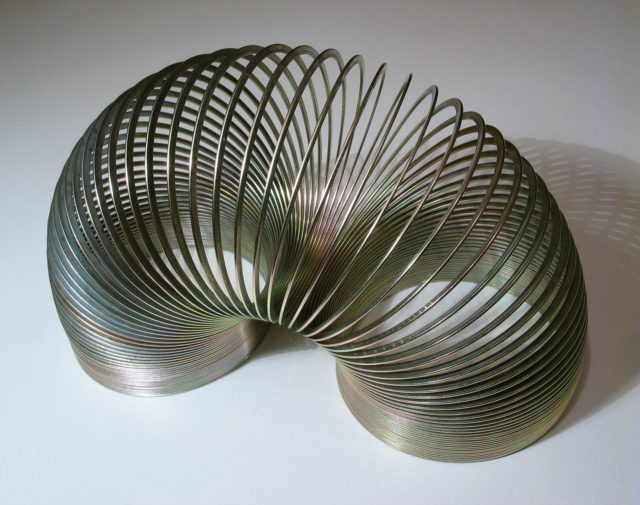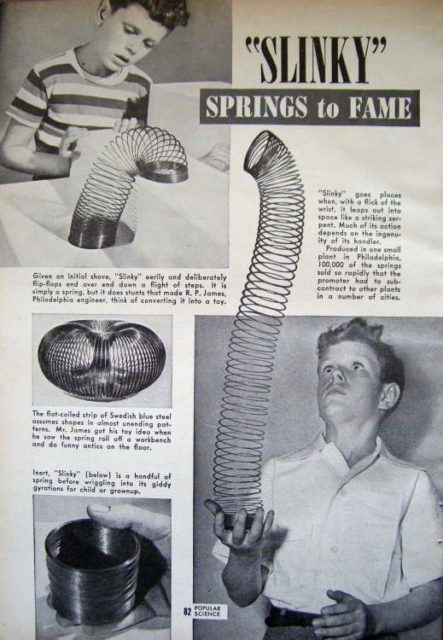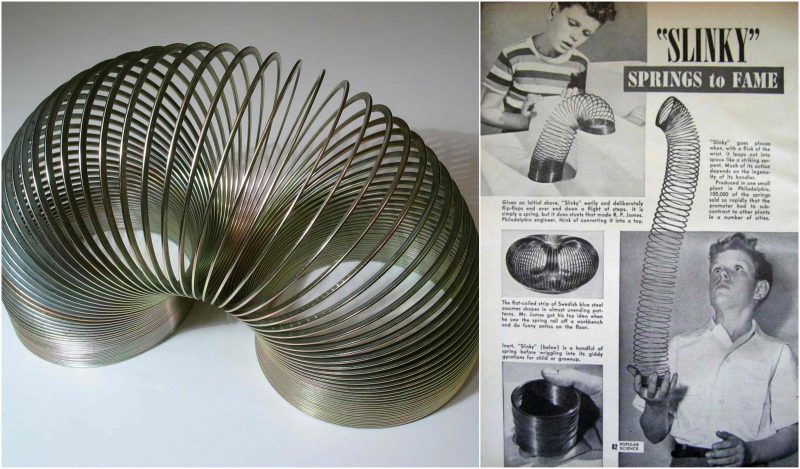Slinky was one of the perks of being a child in the pre-digital era. The more tricks you performed with a slinky, the cooler you were among your friends, right? -Well, recently we found out, that one of our favorite toys was a result of a sheer mistake.

In 1943, Richard James, a naval mechanical engineer stationed at the William Cramp and Sons shipyards in Philadelphia, was developing springs that could support and stabilize sensitive instruments aboard ships in rough seas.
James accidentally knocked one of the springs from a shelf, and watched as the spring “stepped” in a series of arcs to a stack of books, to a tabletop, and to the floor, where it re-coiled itself and stood upright.

James’ wife Betty later recalled, “He came home and said, ‘I think if I got the right property of steel and the right tension; I could make it walk.'” James experimented with different types of steel wire over the next year, and finally found a spring that would walk.
Betty was dubious at first, but changed her mind after the toy was fine-tuned and neighborhood children expressed an excited interest in it. She dubbed the toy Slinky (meaning “sleek and graceful”), after finding the word in a dictionary,and deciding that the word aptly described the sound of a metal spring expanding and collapsing.

With a US$500 loan, the couple formed James Industries (originally James Spring & Wire Company), had 400 Slinky units made by a local machine shop, hand-wrapped each in yellow paper, and priced them at $1 a piece. Each was 21⁄2” tall, and included 98 coils of high-grade blue-black Swedish steel.
The James’s had difficulty selling Slinky to toy stores but, in November 1945, they were granted permission to set up an inclined plane in the toy section of Gimbels department store in Philadelphia to demonstrate the toy. Slinky was a hit, and the first 400 units were sold within ninety minutes. In 1946, Slinky was introduced at the American Toy Fair.
